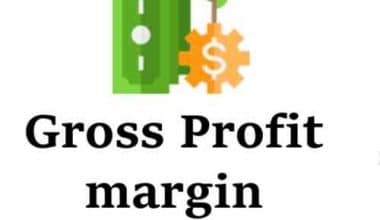Creating a new product or service is a lot of labor, and sadly, it doesn’t end there—launching and advertising it is the other half of the equation. You could have the best new product or service available, but if you don’t adequately promote it, you’re likely to miss out on possibilities or even lose money. With so many firms pivoting their products and services as a result of COVID-19 and unable to afford opportunity losses, we thought it would be appropriate to provide you with some assistance on this topic.
This article will walk you through the procedures and examples of 11 effective product promotion ideas.
What is Product Promotion?
Product promotion is the process of marketing to consumers new or featured goods or services. It is a set of strategies used to draw attention to a brand and a specific product when it is first introduced to the market or when a corporation showcases this item after it has been launched.
Promoting a product is a key approach to generating sales and revenue to offset the costs of initial R&D, production, and product trials. However, if the product has gained traction in the consumer sector, a well-planned promotional effort can result in significant revenues.
Promotion is the fourth component of the marketing mix (i.e., product, price, place, and promotion) and is defined as a means of communication used by businesses to achieve a certain set of goals such as:
- Prospective purchasers should be informed about the availability of product features and applications.
- To increase demand for a product by raising customer awareness and interest.
- To distinguish the product from the competition’s product by cultivating brand loyalty.
- To maintain sales by emphasizing the importance and features of the product.
Types of Product Promotion
Companies generally use one of four types of promotion:
- Promotional information
- Persuasive promotion
- Promotion reminder
- Changes in Buyer Behavior
Promotion’s primary goal is to persuade clients to buy and consists of three forms of sales activity: advertising, personal selling, and sales promotion. The significance of product promotion stems from the fact that no firm can exist in the market without efficiently contacting clients and cannot compete with other market participants if no distinctive benefits are supplied to customers.
Other types of promotions include above-the-line promotions (advertising, press releases, schemes, discounts, and so on) and below-the-line promotions (trade discounts, freebies, awards, etc.)
Why Is Product Promotion Necessary?
Product promotion helps to increase brand recognition, recall, credibility, and sales. A product without a promotion strategy is like a car without wheels: it will not move. When a competitor offering identical products to yours enters the market, having a promotional strategy will help you differentiate and sell your products.
Promoting your product also allows you to gain valuable customer insights and analyze them in order to develop better strategies in the future. These insights can provide information on market trends, customer preferences, and consumption habits.
The utilization of internet platforms is the most significant advantage of promoting your product in today’s digital environment. Online platforms make you more visible on the internet, which leads to increased visibility in front of your target market.
While it is critical to understand why product promotion is vital, it is also critical to understand how to promote a product and to be consistent enough to do so successfully.
How to Promote Products
Before marketing a product to consumers, various factors must be considered. Here are some ideas for getting ready to promote a product:
#1. Address the four major aspects of the promotion process.
Consider the product, the item’s sales price, how the item appears in stores, whether brick-and-mortar or online, and what strategies are best for promoting the item. Here are several options for navigating this process:
- Product: When a firm produces a new product or even refreshes an existing one, marketing employees must learn about it and consider it from the consumer’s point of view. The first step in marketing an item or service is determining important features, defining the target audience for the product, and generating product descriptions.
- Price: Another critical aspect of selling a product is determining how much the item will cost customers. Many factors influence an item’s pricing, including manufacturing costs, market value, and making the item competitive with other brands.
- Placement: Marketing personnel analyzes where the product can be best placed or sold to reach the greatest number of people.
- Promotion: Finally, marketing employees plan how and where to advertise a product. Multiple campaigns across many media types may be required to promote a product or service. Innovative product introductions can both attract new clients and rekindle the enthusiasm of existing ones.
#2. Plan out your advertisement
Collaborate with design employees to create product packaging and labeling that are consistent with your employer’s marketing strategy. Consider how graphic design components might assist your aim to engage an audience by marketing an eco-friendly product, for example. Create digital and print advertisements that are ready to go as soon as the product is available.
#3. Introduce or reintroduce a product
Once you’ve created a product, priced it, and put it on the product, it’s time to launch it to the public utilizing your promotional strategy. Involve loyal customers and the press by creating information ahead of time through direct marketing. You might consider providing a particular date for the product launch so that customers may build products for it.
#4. Get the clients’ attention
Gain interest and attention by marketing to your existing customer base while you debut the product into the consumer marketplace. Through a range of advertising strategies, encourage loyal customers to try the product. Reward them with special prices and other benefits.
11 Examples of Product Promotion Ideas
Promoting a product is difficult, and everyone has a different strategy.
Here are a few examples of product promotion ideas:
#1. Organize a Social Media Contest
This serves to pique people’s interest in things. It creates interest and allows the audience to spread the word about the product.
#2. Distribute Free Samples
Free samples stimulate interest. Users can test the product before purchasing it and encourage their friends to do the same.
Samples can be distributed via websites, trade exhibitions, social media, and other channels.
#3. Email Marketing Promotion
Email marketing is the most effective type of promotion. Businesses distribute product marketing directly to their target audience in order to urge them to buy. According to some research, for every dollar spent on email marketing, firms earn 43 USD.
Email marketing allows product promotions to reach a large number of people fast.
#4. Promote Your Business Using Influencer Marketing
Celebrities, social media influencers, and bloggers can help businesses sell their products.
Influencers introduce the product to their followers, and businesses receive leads as a result.
#5. Organize a Webinar or Online Seminar
Businesses can host instructive webinars and, in the end, offer their product.
The webinar can address any specific issue that customers are experiencing and then demonstrate how the product can assist them. Holding webinars is now simple, inexpensive, and requires no special skills.
#6. Follow Up Potential Clients
This method entails contacting prospects who have not yet converted. Email marketing, social media ads, and other methods can help businesses contact these people.
A promotion campaign may also include following up with existing consumers to sell another product. Businesses might provide a discount or extended warranty, as well as a gift voucher or present.
#7. Make a Blog Post
Content marketing is the most cost-effective and long-term method of product promotion. Businesses write about why customers should purchase their items. They contain details about what it does, how it operates, and who could buy it. It might be product images, detailed films, or client testimonials.
Content marketing is advantageous since it can be used on virtually any blog or website.
#8. Provide Discounts
Businesses might provide discounts in exchange for a reference. This attracts more customers to the brand.
Incentives encourage individuals to buy your product right away, increasing your sales and brand recognition.
#9. Allow for Trade-Ins
Trade-ins help to clear out outdated inventory to make room for new ones. Businesses can offer customers to trade in their old products in exchange for credit toward the purchase of new ones.
#10. Make a Complimentary Upgrade Available
A buyer has previously purchased a product, thus a free upgrade is effective product promotion.
The upgrade could be a better product at a lower price for existing consumers. This also helps to clear off old merchandise, and customers will feel pampered.
#11. Promote Using Affiliates
Affiliates advertise products in exchange for a percentage of each sale. Affiliates can be found by businesses through social media platforms or affiliate sites such as ClickBank and Commission Junction.
Tips For Effective Product Promotion
- Plan carefully and execute flawlessly. Product promotion is costly and time-consuming, but it is worthwhile. Target the appropriate audience with the appropriate message and through the appropriate marketing channels.
- Give your product some publicity. When displaying products, be creative. You should use appealing pictures, create engaging descriptions, and ensure that the product sticks out from the crowd—for example, product reviews and adverts on online marketplaces.
- Be open to customer comments. Customers’ feedback will begin to stream in as the product grows in popularity. Take their suggestions into consideration. This will assist in keeping customers satisfied and engaged.
- Provide prompt client service. A robust customer care system that swiftly resolves customer complaints is the best product promotion tool.
- Use all available methods to reach your target audience. To reach your target market, use a range of marketing platforms. This will help to enhance product exposure and sales.
- Maintain your competitive edge. Investigate your competitors and look for ways to differentiate your offerings. This will provide you with an advantage in the market.
- Adapt the messaging to certain demographics and tastes. Each marketing channel’s demographics and preferences are distinct. Make sure the message is tailored to these elements.
Read Also: BRANDING AND PROMOTIONS: How To Promote Your Brand Effectively
- Maintain an optimistic mindset. Nobody wants to do business with a company that is hostile or unapproachable. Keeping a pleasant attitude will help you gain more consumers.
- Keep track and make changes as needed. Determine the success of your promotional efforts and make changes as needed. This will aid in the improvement of your marketing. Experiment with various ways to determine which ones work best.
- Maintain consistency across all channels. Make sure your messaging is consistent across your website, social media profiles, and other marketing channels. This will aid in the creation of a consistent brand image for your company and make it easier for customers to connect with you.
- Consider thinking beyond the box. Experiment with multiple marketing channels to see which ones are most effective for your product. Be innovative in your approach and look for new ways to reach your target market.
- Be approachable. Customers do business with people, so be approachable and kind to them. This will make customers feel more at ease working with you, which will encourage them to purchase more things in the future.
- Be cooperative. Collaborate with businesses in different industries to promote each other’s products. This will assist you in broadening your reach, attracting new clients, and increasing revenue.
- Keep track of what works for you. Keep track of the results of your promotional activities and make changes as appropriate. Rep the most effective technique.
Product Promotion Ideas For Online Retailers
The sales promotion examples we looked at provided us with practical advice on how to sell bargains.
Let us summarize these recommendations and best practices:
- Provide genuine value. The value supplied to a product or service should be compelling enough to entice people to convert.
- Consider free shipping. According to a study, 53% of buyers regard free delivery to be the most important incentive to buy.
- Establish a target for each promotion. Each sales promotion must be linked to one or more marketing objectives. A discount-based promotion, for example, can boost short-term sales but degrades brand value over time.
- Create a sense of scarcity or urgency. Try these two great approaches for increasing consumer engagement and conversions in promotional deals.
- Experiment with various methods of delivering sales promos. Consider distributing sales promos via popups, on-site notifications, emails, text messages, and other marketing channels to discover which ones get the most response from customers.
Where Can I Advertise My Product?
Here are some crucial measures to begin selling things online:
A product can be promoted on a variety of channels, including Facebook, Instagram, Twitter, Google My Business, Amazon, and others.
Where Can I Sell My New Product?
E-commerce platforms such as Amazon, AliExpress, and Etsy allow you to sell your products. You may also sell them on your company’s website or through social media sites such as Facebook Marketplace and Instagram Shop.
Conclusion
A comprehensive plan for product promotion will assist you to identify how well your product sells when it is launched. You can use one or more of the methods listed above to market and sell your product. You can also utilize e-commerce artificial intelligence techniques to sell your product in a more tailored way.
- Promotion Mix: Definition, Types, Importance, & Strategies
- Promotion strategy: Best easy practices and all you need (+ free pdf)
- Promotional Pricing Strategy: Definitive Guide for Price Promotion
- SALES PROMOTION: The A-Z Guide
- ADVERTISING AND PROMOTION: Effects of Advertising & Promotion on Small Businesses






